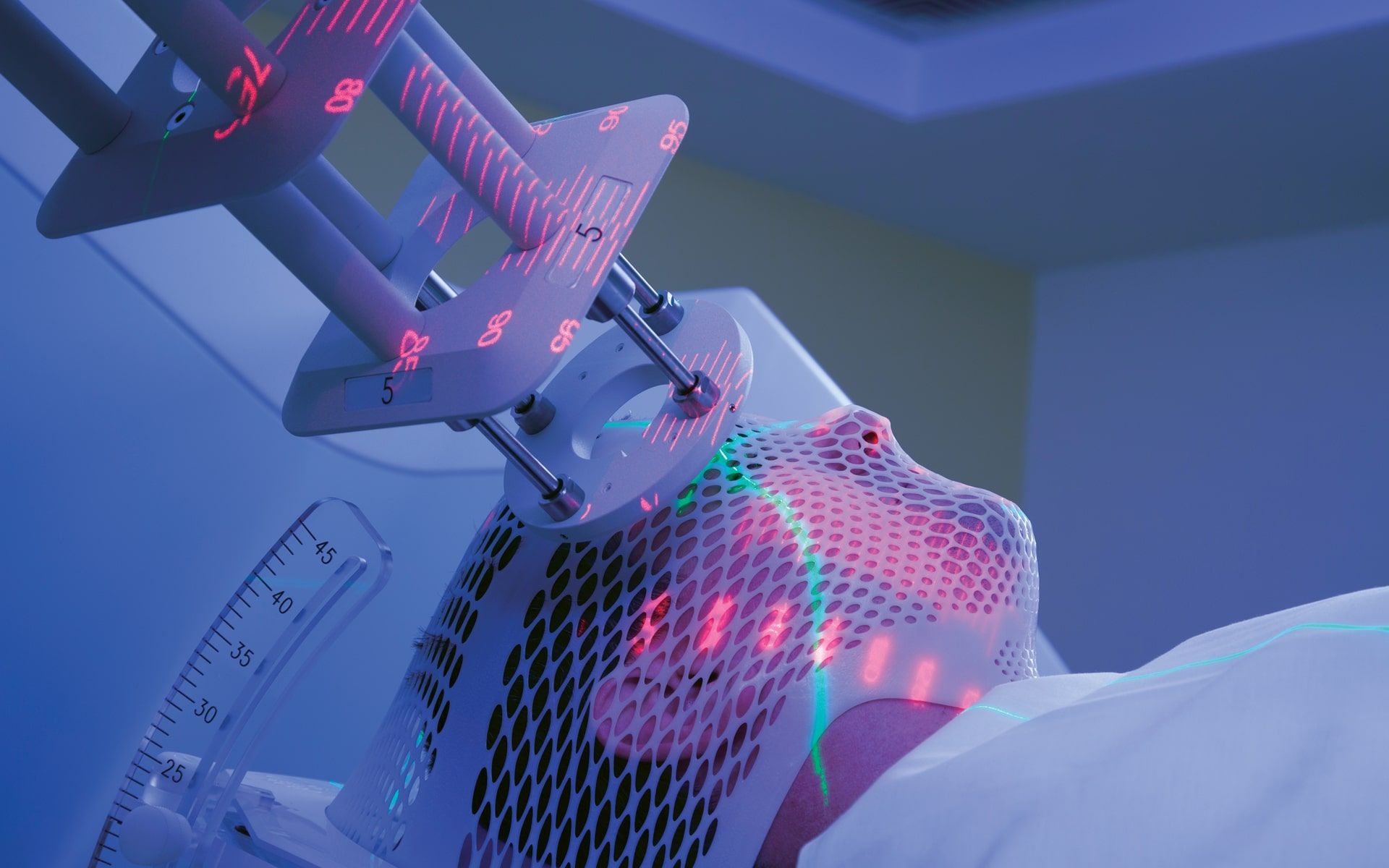FLASH Radiotherapy

In This Article
-
FLASH RT represents an entire archetypal shift as opposed to an improvement upon the present era of radiotherapy technology.
-
FLASH RT is perhaps one of the most promising technologies for tumor therapy, imparting vital views for preclinical studies.
-
If future studies yield greater know-how of the organic mechanisms of the FLASH impact, it will be viable to acquire it at decreased doses, growing its scientific viability.
FLASH radiotherapy is a brand-new model of radiation therapy that may be administered to a cancer patient in as little as a single, complete treatment. The therapy lasts much less than one second and has a duration of up to six weeks. Comparatively, conventional radiation therapy takes several minutes to administer the same dose.
Introduction
Radiotherapy is one of the predominant scientific remedies for tumors. The goals of radiotherapy are twofold; the first of which lies in successfully killing tumor cells with ionizing radiation, and the second is, at the same time, minimizing regular tissue damage that negatively influences the affected person's care and quality of life. It is estimated that up to 65% of tumor patients go through radiotherapy at one point during their treatment. The first thing to do to reach these goals is to deposit a high amount of powerful ionizing radiation onto a tumor while at the same time avoiding irradiating regular tissue. Recent decades have seen a rise of new, superior technology consisting of intensity-modulated radiotherapy, stereotactic body radiotherapy, proton, and carbon particle radiotherapy. These new devices and techniques have converted radiotherapy into a particular and effective therapy routine for most cancer sufferers with the aid of using enhanced spatial dose administration. Nevertheless, the therapy of radiation-resistant tumors continues to be confined with the aid of using dose-proscribing regular tissue complications.
The second thing to do to achieve successful radiation is to grow the differential reaction among regular tissue and tumors to ionize radiation with the aid of using, for instance, a hyper-fractionated therapy strategy. Conventional radiotherapy (CONV-RT) contains fractions of two Gy (or “gray”; a measurement used for radiation) per day for five days (Monday to Friday) every week for numerous weeks, permitting regular tissues to get over radiation-precipitated damaging results to an extra quantity than tumors, whose radiation reaction is dictated with the aid of using the whole dose introduced as opposed to with the aid of using the dose given at every fraction. Recently, a third method to for precise aiming, known as FLASH-RT, emerged as a promising new device in presenting temporal administration of a single dose of high dose rate ionizing radiation.
What is new in Radiation Therapy?
Conventional RT has developed significantly over time. However, the harm precipitated to healthy tissues at some point of the radiation therapy continues to be a vital task for traditional RT.
FLASH RT represents an entire archetypal shift as opposed to an improvement upon the present era of radiotherapy technology. The variety of research is continuously growing to an accumulation of promising outcomes. FLASH RT is perhaps one of the most promising technologies for tumor therapy, imparting vital views for preclinical studies.
Advantages of Flash radiation therapy compared to conventional radiation therapy
FLASH RT complements the differential impact among tumors and healthy tissues. FLASH RT provides doses in an extraordinarily brief irradiation time as a quick “flash” of radiation. FLASH RT is iso-powerful whilst in comparison to standard dose rate RT, thus decreasing regular tissue toxicity and side effects.
Conventional radiotherapy (RT) is significantly confined by radiation-precipitated toxicities. If those could be decreased, an extra dose of radiation might be given thus facilitating a higher tumor reaction.
The ultra-speedy administration of radiation therapy (i.e., electrons, photons/x-rays, and protons) at dose rates numerous orders-of-importance extra than the ones presently utilized in scientific exercise reduces radiation-precipitated toxicities. This permits regular tissue tolerance stages to be substantially exceeded, thereby growing the healing index over traditional radiation administration.
In traditional external beam radiotherapy (EBRT), the affected person is irradiated for 1-2 minutes, 5-days/wk, for 1-2 months. In FLASH-RT, the affected person might be irradiated in < 0.1 second for 1 to four days thus substantially decreasing side-effects, regular tissue toxicity, and cost.
Tissue toxicity
It was first discovered in the 1960’s that non-cancerous cells that were subjected to ultra-high dose rates of radiotherapy had been much more likely to be viable than the ones subjected to standard dose rates. This has been currently supported with the aid of using research in mice, and was validated that there was much less harm in the lungs of mice treated with FLASH-RT in comparison to the ones treated with CONV-RT. In every other examination, mice subjected to complete brain irradiation at traditional dose rates were worse in recognition checks in comparison to the ones treated at ultra-high dose rates. Radiation-precipitated pores and skin reactions can encompass reddening and breakdown and have been proven to be greatly decreased in rodents being treated with FLASH-RT in comparison to CONV-RT. FLASH-RT additionally compared favorably in a single examine evaluating the pores and skin response of a mini-pig to distinctive dose rates of radiotherapy. Another examination related to the therapy of nasal cancers in cats with FLASH-RT confirmed the entire remission of tumors with minimum trauma to surrounding tissues. Researching the FLASH impact is of importance to set up how it could be utilized in a scientific situation to deal with most cancer patients.
Many research studies show that further to decreasing tissue toxicity, FLASH-RT additionally produces an identical tumor reaction as CONV-RT.
Influencing elements
There is an array of elements that could have an effect on the efficacy of FLASH treatment which includes dose rate, general dose, pulse rate, fractionation, and modality of radiation. The dose rate used for the FLASH impact may additionally range relying upon the affected tissue and the administration approach. Many studies vary in the general dose of radiation used, or use doses inconceivable in scientific scenarios, which complicate the findings. The supply of radiation is likewise an aspect because FLASH impact has been primarily discovered by using electron linear accelerators. More currently, the success of FLASH treatment has additionally been visible following usage of proton and X-ray radiation. Pulsing the radiation at a high frequency can result in FLASH therapy at an appropriate dose-in line with-pulse. Furthermore, the examination is wanted to verify the important parameters for inducing the FLASH impact, as there are a wide variety of variables at work.
Oxygen depletion
Exactly why the FLASH impact happens is not absolutely understood but has been hypothesized. Hypoxic tissues (tissues which might be disadvantaged of oxygen) are greatly immune to radiation (and are consequently much less likely to be damaged) than well-oxygenated tissues. It is therefore conceptualized that the distinction in tissue toxicity among FLASH-RT and CONV-RT can be because of the extent of hypoxia at ultra-high dose rates and ensuing radioresistance transferred to irradiated tissue.
Changes in immunity
Another proposed idea for FLASH treatment to have a greater impact is a changed immune reaction. Since it utilizes a shorter therapy time, much fewer lymphocytes (white blood cells concerned within the immune gadget) suffer from the radiation. One examination mentioned much less immune gadget activation in mice following FLASH-RT in comparison to CONV-RT. It has to be referred to that it's far doubtful if any immune reaction following FLASH-RT is contributing to the FLASH impact or because of it. Other organic responses consisting of DNA harm and infection can also be contributing, and greater research is needed for clarification.
Conclusion
FLASH-RT provides a single burst of high dosage rate ionizing radiation in milliseconds and achieves near perfect tumor control and, at the same time, spares regular tissues from extreme aspect results. The result is the presentation of fascinating imaginative and prescient of enhancing scientific results for tumor sufferers with the aid of using the use of dose-rate modulation of radiotherapy. The FLASH impact gives advanced tissue safety in comparison to CONV-RT without compromising on tumor therapy. It has been studied throughout numerous species and now a single human case has been documented. While its mechanism of motion is likely to contain oxygen depletion, it isn't always absolutely understood and consequently calls for similar examination. The doses required to acquire the FLASH impact make it unsuitable for many patient studies. Furthermore, the provision of radiation sources to generating appropriate beams for the therapy of each superficial and deep tumor is a proscribing aspect in scientific trials. If future studies yield greater know-how of the organic mechanisms of the FLASH impact, it will be viable to acquire it at decreased doses, growing its scientific viability.
References
- https://www.mdpi.com/1422-0067/21/18/6492
- Jonathan R. Hughes and Jason L. Parsons.: “FLASH Radiotherapy: Current Knowledge and Future Insights Using Proton-Beam Therapy”. Int. J. Mol. Sci. 2020, 21(18), 6492; Cancer Research Centre, Department of Molecular and Clinical Cancer Medicine, University of Liverpool, 200 London Road, Liverpool L3 9TA, UK And Clatterbridge Cancer Centre NHS Foundation Trust, Clatterbridge Road, Bebington CH63 4JY, UK.
- https://www.sciencedirect.com/science/article/pii/S26665557203000833 4. Guangming Zhou. : Mechanisms underlying FLASH radiotherapy, a novel way to enlarge the differential responses to ionizing radiation between normal and tumor tissues. Radiation Medicine and Protection. Volume 1, Issue 1, March 2020, Pages 35-40
- https://isensors.net/flash-rt/5.
- https://researchoutreach.org/articles/flash-radiotherapy-what-how-why/#:
- J. D. Wilson, E. M. Hammond, G. S. Higgins, K. Petersson (2020) Ultra-High Dose Rate (FLASH) Radiotherapy: Silver Bullet or Fool’s Gold? Frontiers in Oncology 9, 1563.









